Potato cultivation involves a series of carefully planned steps to ensure successful growth and a good yield. Potatoes (Solanum tuberosum) are grown worldwide and require specific environmental conditions, including cool temperatures and well-drained soil. The cultivation process can be broken down into preparation, planting, care during growth, and harvesting stages.
Soil Preparation
The first step in cultivating potatoes is soil preparation. Potatoes grow best in loose, well-drained, and fertile soils with a pH of 5.5 to 6.5. The soil should be rich in organic matter, and farmers often add compost or well-rotted manure to enhance fertility. Before planting, the field should be plowed or tilled to a depth of about 8 to 12 inches, breaking up any compacted soil and ensuring good root development. The soil is also aerated to provide adequate space for the growing tubers.
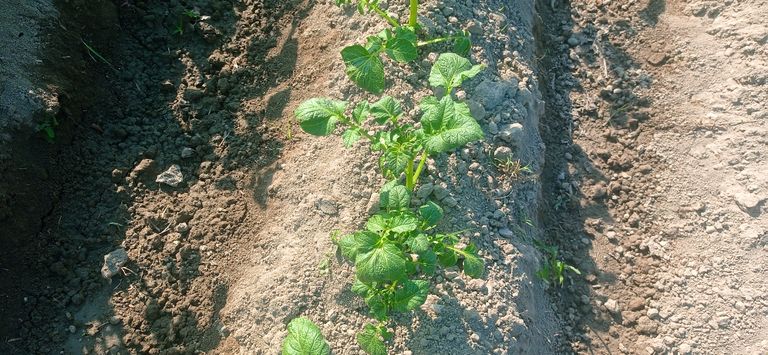
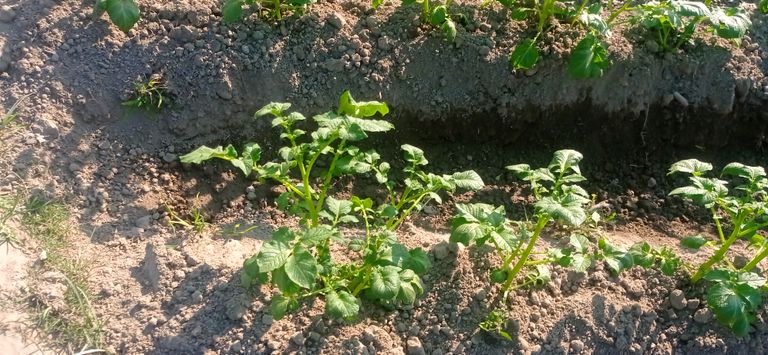

Choosing Seed Potatoes
Unlike other crops, potatoes are grown from tubers, known as seed potatoes. These are certified disease-free tubers that are specially selected for planting. Seed potatoes are typically cut into pieces, with each piece containing at least one "eye" (bud) from which a new plant will emerge. The pieces are left to dry for a day or two to prevent rot before planting. Farmers often use certified seed potatoes to ensure healthy plants and higher yields.
Planting
Potatoes are typically planted in early spring, after the danger of frost has passed. The planting depth varies depending on soil conditions but is usually about 3 to 5 inches. In rows, seed potatoes are spaced about 12 to 15 inches apart, with rows placed 30 to 36 inches apart. The eyes of the seed potatoes are positioned facing upward, and the pieces are placed in a shallow trench. Once planted, the trench is filled with soil to cover the potatoes.
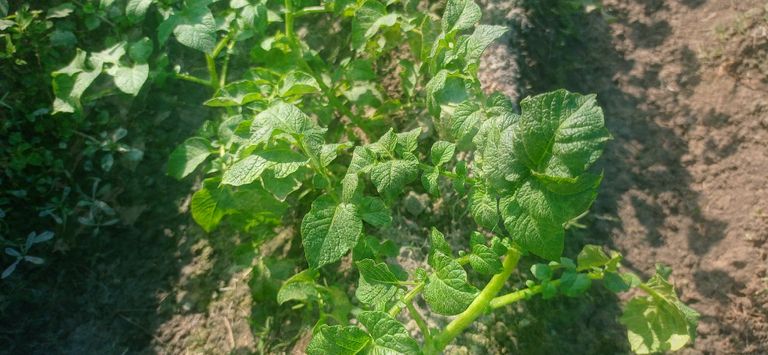
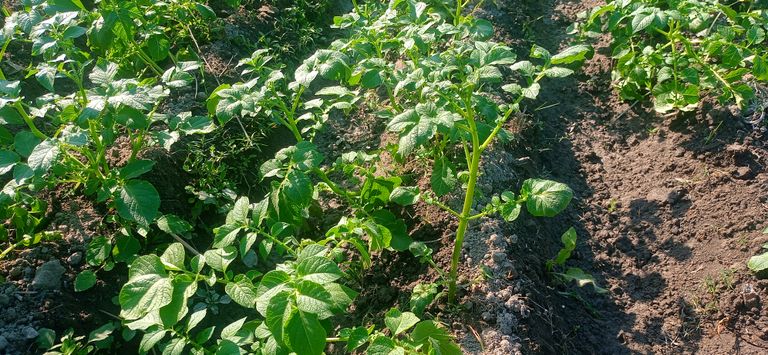
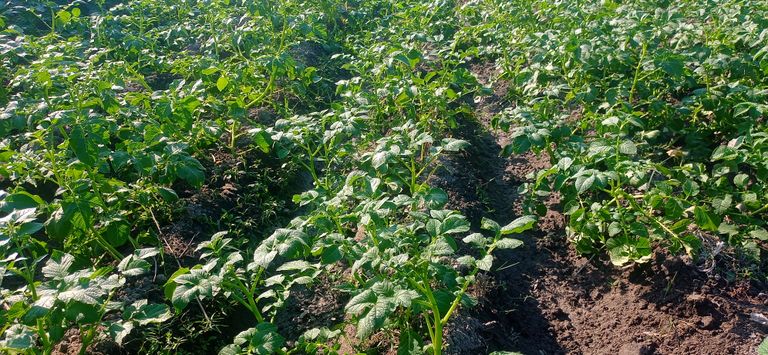
Irrigation and Fertilization
Potatoes require consistent moisture for optimal growth, but they should not be waterlogged. Regular irrigation is necessary, particularly during dry spells. Drip irrigation or sprinklers are commonly used to ensure even water distribution without over-saturating the soil. Additionally, potatoes need nutrients such as nitrogen, phosphorus, and potassium. Fertilizers, particularly those high in potassium, are applied to promote healthy tuber development. Organic fertilizers like compost or manure can also be used to enrich the soil.
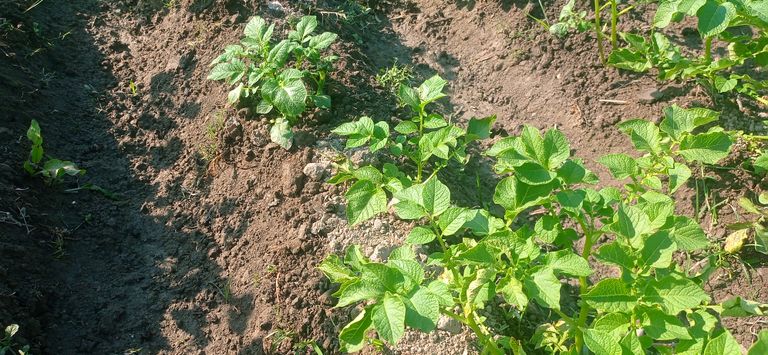
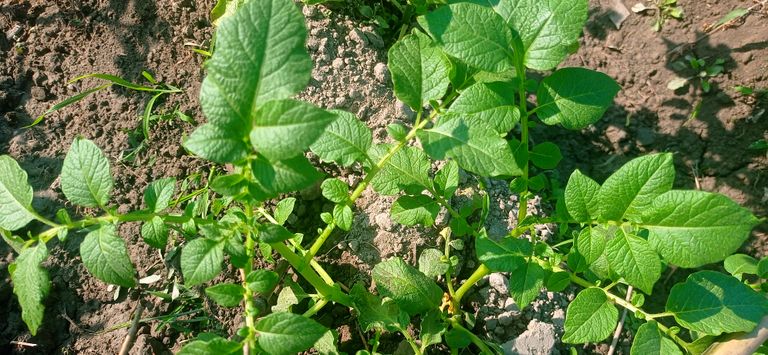
Hilling
As the potato plants begin to grow, they should be "hilled." This involves mounding soil around the base of the plants to encourage the formation of additional tubers. Hilling also helps prevent sunlight from reaching the developing tubers, which can cause them to turn green and become inedible. This process is typically done when the plants reach about 6 to 8 inches tall and repeated several times
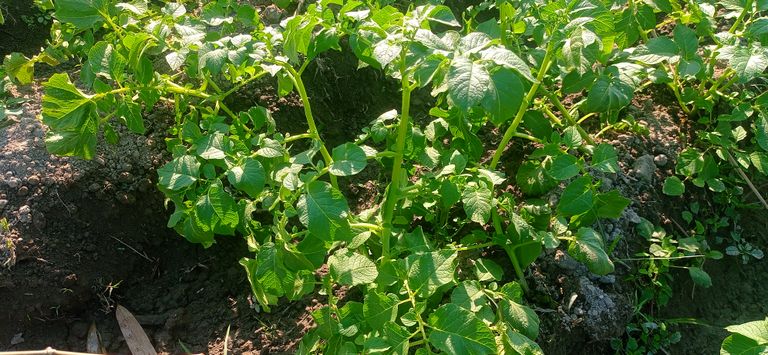
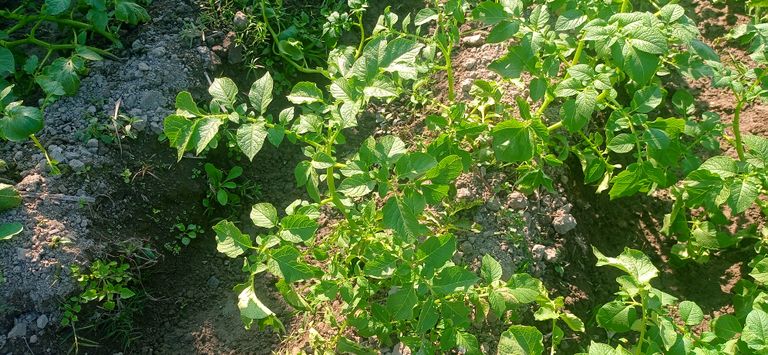
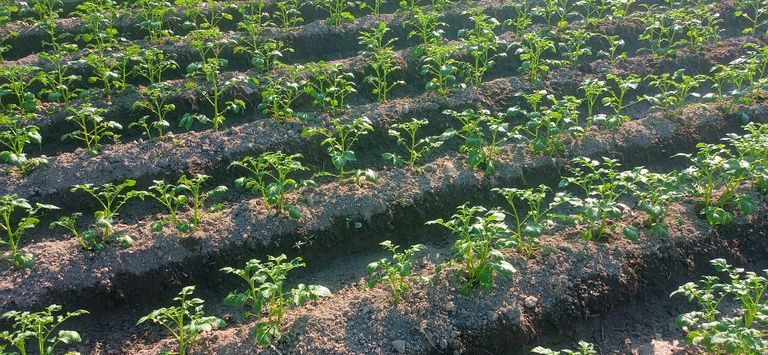
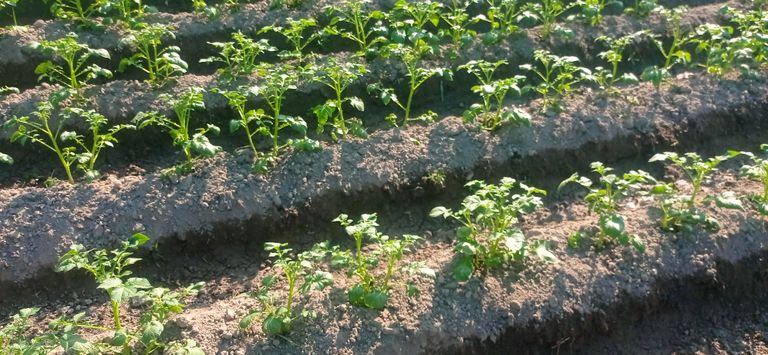
during the growing season.
Pest and Disease Management
Potatoes are susceptible to various pests, including aphids, Colorado potato beetles, and fungal diseases like late blight. Integrated pest management (IPM) techniques, such as crop rotation, the use of resistant varieties, and organic or chemical treatments, are employed to control these threats. Regular inspection of plants is essential to catch infestations early.
Harvesting
Potatoes are ready to harvest when the plant tops die back and turn yellow or brown. This typically occurs about 90 to 120 days after planting, depending on the variety and environmental conditions. Farmers carefully dig up the potatoes using specialized equipment or by hand, ensuring not to damage the tubers. After harvesting, the potatoes are left to dry in a cool, dark, and well-ventilated place to cure, which helps improve storage life.
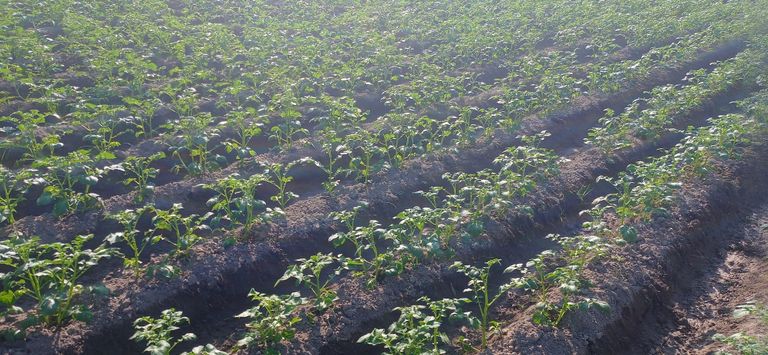
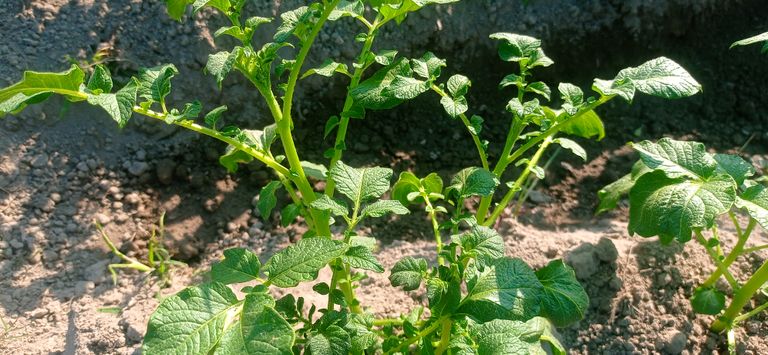
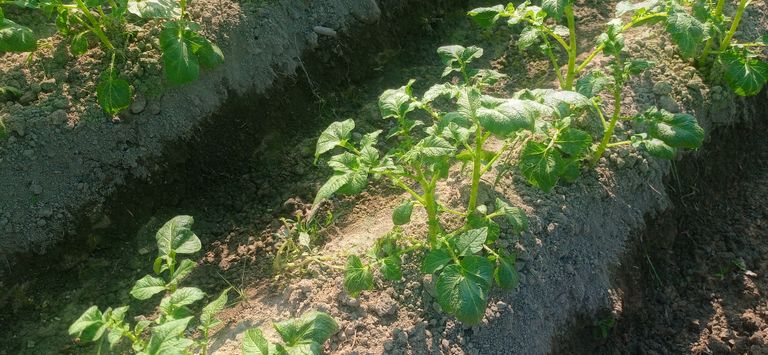
Storage
Once cured, potatoes can be stored in cool, dark, and dry conditions. Ideal storage temperatures are around 45-50°F (7-10°C). Potatoes should be kept away from light to prevent them from turning green, which can indicate the presence of solanine, a toxic compound. Proper storage ensures potatoes remain fresh and usable for several months after harvest.
By following these steps, farmers can grow potatoes efficiently, yielding high-quality crops for consumption, processing, or sale.
The composition of this photograph is excellent. I like it very much. thank you